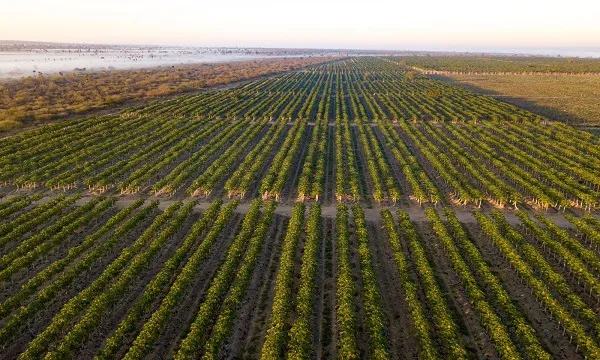From its base in Hectorspruit, Neofresh manages its subtropical fruit operations from its late litchi farm in White River, Mpumalanga Province, northeastwards to where the bulk of their papayas grow near Moambo in southern Mozambique.
 Papaya orchards in the south of Mozambique
Papaya orchards in the south of Mozambique
Neofresh has a strong footprint in local retail, especially in niche products like papayas of which it grows an annual average of 11,500 tonnes on 280ha. “There aren’t many largescale papaya producers and it’s a sensitive market that needs to be managed well not to oversupply the market,” remarks Lean van Schalkwyk, marketing manager at Neofresh.
Papayas are now entering its traditional seasonal scarcity (it will pick up towards mid-April and run at full tilt to the end of the year) while only the very first lemons have been picked.
“Hopefully we’ll be picking lemons for export by the end of this month. It depends on packouts, but usually our earliest lemons go to the Middle East.”
Litchis five months of the year
Neofresh grows around 700 tonnes of litchis annually for five months of the year, the only South African litchi producer to do so. Their litchi season runs from mid-October all the way to March, and courtesy of very good late litchi genetics local consumers can buy litchis for at least the next month.
It has been a litchi season of good volume and quality, Lean says.
“We have many young litchi trees which will start optimally bearing over the next three to five years. Most of the crop currently comes from old orchards. Our first litchi crop from Mozambique went well this season.”
Litchi exports have ended for the season. The early air freight season got off to a good start but in the middle of the season prices came under pressure, he says. They export a portion of their litchis themselves and the balance through third party exporters.
“There is definitely pressure on the European economy, we could see that. I think there’s pressure on exotic fruit generally.”
Middle East mango exports
The mango season already ended in the first week of the year and Neofresh exported two containers of Tommy Atkins mangoes to the Middle East.
“It arrived well and it’s a good market to enter. We grow mainly Tommy Atkins in our area which isn’t necessarily the best export quality as Europe prefers the later varieties Keitt and Kent. These varieties are more suited to Hoedspruit which is a drier area than we have here.”
Mango orchards in flower in Hectorspruit, Mpumalanga
He continues: “A fair amount of mangoes have recently been planted in our area. We’ll probably have to think more about exports, probably to the Middle East which receives Tommy Atkins more readily.”
The local mango market started with good prices in November which came under pressure in December when the mango harvest in Hoedspruit started. The local mango price usually stabilizes after New Year, Lean notes.
Counterseasonal ginger available for exports
“Our goal is to market locally-grown ginger twelve months of the year and we’re well on our way to do that,” he says, remarking that South African ginger presents a very good export opportunity because of the counterseasonality to China.
“We have already exported ginger to Canada, with very good arrivals. The UK and Europe would be equally good markets for our ginger.”
Ginger imports compete with local production, he says, but he’s hoping that China’s lower volumes will push up the price of their ginger this season.“The local market is very unpredictable and traders won’t necessarily want to take the risk of importing ginger at higher prices with demand being weak.”
The ginger market came under a lot of pressure last season due to an oversupply of ginger coupled with fairly poor demand.
Lean remarks that there’s definitely support for local ginger on the municipal market.
“We want to build on that. We can supply more than enough ginger for everyone on a twelve month basis.”
Neofresh has established macadamia orchards; for now, avocados remain out of reach because their climate is too hot.
As for bananas, the company doesn’t see a place for it in its business plan, considering the volumes and hectarage needed to make financial sense in the bulk banana trade.
Neoberry
Neoberry is a separate firm with its own investors with 12ha of blueberries which Neofresh grows for Berryworld.
“The blueberry market has become very full recently and it’s come under pressure."  For more information:
For more information:
Lean van Schalkwyk
Neofresh
Tel: +27 13 590 0947
Email: lean.van.schalkwyk@neofresh.net
https://neofresh.net/
